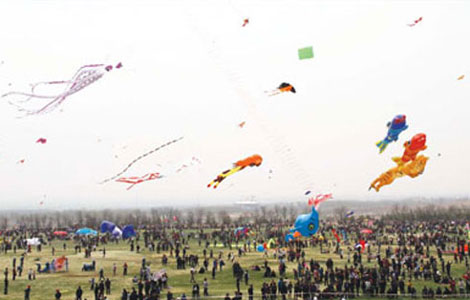Society
First stars were massive, fast-spinning
Updated: 2011-04-28 10:36
(Agencies)
LOS ANGELES – The first stars that dotted the universe were not only immense, but probably also fast-spinning, according to a new study that sheds light on the nature of stellar evolution.
These early stars died out long ago, but astronomers can get a glimpse of what they were like by looking at later generations of stars.
| ||||
This is important because a star that spins more rapidly can live longer and suffer different fates than slow-spinning ones.
Findings appear in Thursday's issue of the journal Nature
Current theory holds that the universe was born out of an explosion, called the Big Bang, about 13.7 billion years ago. During the next 200 million years, the universe cooled, leaving it dark and starless.
The first stars that formed during the universe's infancy were different from stars like our sun, which is mostly hydrogen, but also contains oxygen and carbon. The earliest stars were primarily hydrogen and helium. They also lived fast and died young.
When they died, they exploded as brilliant supernovae and seeded the universe with basic elements from which future stars, including our sun, were created.
If the first stars were indeed spin machines, some of them likely died as gamma-ray bursts, meaning scientists today would have a better chance of detecting them.
Telescopes such as NASA's Swift satellite have the ability to spy gamma-ray bursts, but have a much harder time observing supernovae.
This "increases the chances we'll directly observe the death of massive stars during that epoch," said Jason Tumlinson of the Space Telescope Science Institute in Maryland, who had no role in the study.
E-paper

Blowing in the wind
High-Flyers from around the world recently traveled to home of the kite for a very special event.
Preview of the coming issue
Image maker
Changing fortunes
Specials

Costly dream
Uninhabited havens up for lease but potential customers face wave of challenges in developing them.

Models gear up car sales
Beauty helps steer buyers as market accelerates.

Urban breathing space
City park at heart of Changchun positions itself as top tourism attraction



